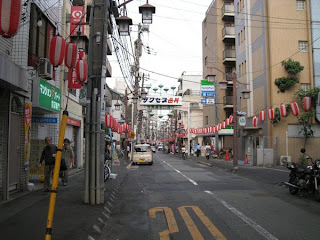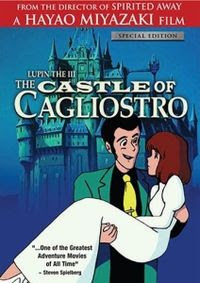I often think that Japanese people are not good at explaining their own cultures to non-Japanese people in English. The issue of whale hunting is the good example which is caused by luck of explanation and mutual understanding. So today's entry, I would like to try to make an effort to make non-Japanese people able to understand, or at least able to imagine, why Japanese people persist in their culture of whale hunting.

To renew my driver's license, today I went Shinagawa, the waterfront of Tokyo. Shinagawa had been the 1st stop of the Tōkaidō (東海道, which literally means East Sea Road, the most important routes of the Edo period, connecting Edo (=Tokyo) to Kyoto) which is famous for Hokusai's Ukiyo-e prints, so there are many lodgings and sushi restaurants.

On the way back, I visited Shinagawa Shrine.

At the entrance, Daikokuten (
大黒天=god of great Darkness) welcomed me, and "
The Seven Gods of Fortune" (七福神, pronounced Shichi Fukujin) including Daikokuten was installed at the site of the Shrine.


The seven gods are often depicted on their treasure ship called "Takarabune". This is the Japanese mythology, but the hilarious thing is that six out of seven gods are foreign gods, from China and India; in other words, the god of Hinduism, Buddhism and Taoism. After importing from India, Daikokuten in Japan became a mixture of Shiva and
Ohkuninushinomikoto, the god of Earth and the counterpart of Amaterasu, the god of Sun. By importing these foreign gods and the structure of religion, Japan formulated the structure of Shintoism. The only Japanese original god of these seven gods is Ebisu, famous from Yebisu Beer. Believe it or not,
Ebisu is the god of Whale.
One of the biggest attraction of Shinagawa Shrine is Fujizuka (
富士塚), a replica of Mt. Fuji, the holy mountain, made from volcanic stones.



As I mentioned, Shinagawa was the first stop of Tōkaidō Road, and Mt. Fuji is located approximately 100km away. Fujizuka was created for the local civilians who cannot visit Mt. Fuji to pray. Therefore, local people climbed this imitation Mt. Fuji to pray. The oldest Fujizuka is created in 1780, and the one in Shinagawa Shrine was built in 1869, one year after Meiji Restoration.
In the process of climbing,
Sarutahiko Ōkami (猿田彦大神), a powerful guardian kami (god), was dedicated.

On the back of this Fujizuka, there is a sculpture of Kaeru (frog) with Japanese joke, "Buji Kaeru (can be read as “Mt. Fuji’s frog" in Japanese), which means “safely back”.

In this shrine, there is one more interesting monument. This monument is called
Houchou Zuka (包丁塚), a tombstone dedicated for kitchen knife.

In Edo period, Shinagawa was the important lodging, so there are many chefs cooking Japanese foods for the travelers. These chefs believed that the cooking knife has a spirit of the chef, so when the cooking knife became old, chefs buried their cooking knifes in the shrine. In Japanese animism, not only Hindu, Buddhist, Taoist and Shinto god, but also whale, mountain, or even kitchen knife has a spirit, and became the objects to pray.

I left Shinagawa Shrine, passing a clinic with an cute illustration of whale and walked 10 minutes, I found Whale Mound(
鯨塚)in Kagata Shrine. Whale Mound is located approximately 100 places all over Japan, but Shinagawa is the only one existing in Tokyo.


In 1798, because of the typhoon, 17 meter whale lost in the cove of Shinagawa was hunted by local fishermen. The whale became news, so even Shogun from Tokugawa family visited the whale in Hama Rikyu Park. The whale was sold, and the head bone was buried here, then the Whale Mound was built for commemoration.
Japanese people appreciated the stray whales as a god, and they made a monument, for the gift of nature. Whaling skill has been sophisticated in Japan, and all parts of Whale were used for their living.


Right next to this Whale Mound, there is a public art of whale with children's toys. Maybe some westerner may get confused why people appreciate whale as a god, and eat and pray at the same time. However, this is all related to the history of Japanese animism, or in other word, the absence of monotheism. The dividend of subject and object was imported to Japan at the time of Meiji restoration, but this dividend is still somewhat unclear in Japanese society, therefore the self and the nature is still not completely divided. Therefore, the whale is sometimes the object of worship, and sometimes the object of worship could be considered a gift of nature, so people eat this, with lots of appreciation for nature.
For some of the Japanese traditional people, the denial of whale hunting could mean the denial of their own tradition and religion. These people can get frantic by the criticism of non-Japanese people, since they do not have a word or media to explain their thought.
To explain own culture is challenging. However, it cannot be an excuse of the fact that most of the Japanese people did not make an enough effort to explain. On the other hand, many of the non-Japanese people did not have a patience to hear someone different, and accept the difference. As a person born in a fisherman's family in Japan and receive education in the U.S., I wanted to speak out a little on this issue.
I do not want to judge what is right or wrong, but I would like to share the information, and would like to think the possible future. To end this essay, I would like to quote my favorite prayer, which might have a universal meaning.
The Serenity Prayer
by Reinhold Niebuhr
God, grant me the serenity to accept the things I cannot change;
the courage to change the things I can;
and the wisdom to know the difference.
PS: Do you know Godzilla is a mutant Kujira (whale in Japanese)? Whale get radiated by the U.S. nuclear test in Bikini Island, and the radiated whale (kujira) became Godzilla (Pronounced as Gojira, this is kind of anagram in Japanese).



















